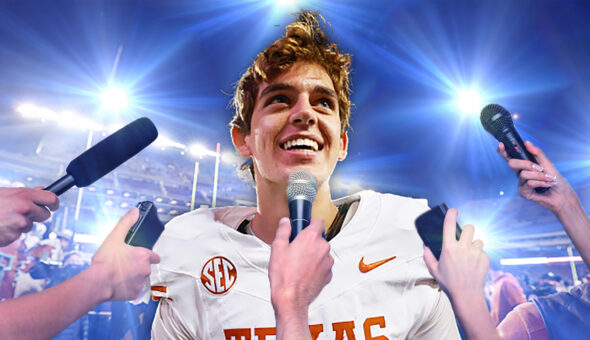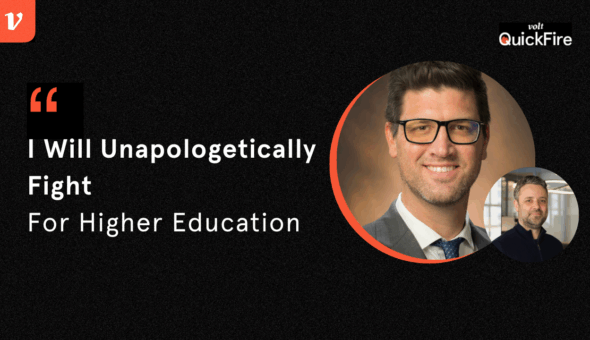Let’s face it: college is an adjustment period. As a result, colleges have made it a point to load the campuses with a plethora of helpful campus resources and opportunities that students of all seniority levels can seek out for themselves to make earning a college degree just a little easier.
Most of the time, the campus resources are a major win-win. Giving students the ability to access resources, from academic advising to college writing centers, fosters an environment where students feel more welcomed. In turn, students feel happier and more confident academically and socially because they believe they picked the right college.
Of course, many questions line the way for something to rise from a simple idea into an accessible and fully operational program: How does a college determine if a resource is necessary? How much time should you give a program to be successful? What happens if a program that had a promising start fails?
What Is Success?
We spoke with Eric Scott, the VP of student affairs at the University of New Mexico, to hear how his university answers these questions. Student feedback is essential when determining a resource’s necessity.
“We pay close attention to what our students are telling us via climate surveys, student governance, feedback sessions, and internal research,” said Scott. “We also observe national trends and data on student needs and adjust accordingly.”
Student opinion is a clear and pivotal factor when planning these resources. As indicated by Scott’s feedback, institutions should be aware of the social climate at the university and in the larger community. See what works nationally, what other colleges are doing, and how those programs work for them.
The internet is a good tool for collecting this type of data, with hundreds of websites, such as Research.com, tackling the Top Trends in Higher Education for 2023 and showing how colleges can use this info to adjust and tweak their resources to take care of the current problems and priorities that their students are facing head-on.
“One metric would have a real impact on students,” Scott said about how UNM measures success. “For some programs, a data point would be the number of students reached, while for others, it is more about effective intervention in complex circumstances.”
However, Scott acknowledged that data collected by these resources could be skewed or difficult to predict accurately.
“Other resources, particularly those about holistic wellness, are harder to pinpoint as key indicators such as wellbeing,” said Scott. “And others, such as retention, are influenced by a variety of factors, student support programs being just one of them.”
If a program helps even one student, it would not be considered a failure.
Show Me the Money
Scott also noted that money is the main factor that outlines the timeline for a program to be deemed successful.
“Some pilots have firm end dates based on their funding source,” said Scott. “Others may continuously evolve.”
Scott was optimistic about the resources at UNM and was hesitant to call a college resource a “failure.”
“If a program helps even one student, it would not be considered a failure,” said Scott. “Some programs are implemented as pilots, and what we learn from them can inform other efforts that might fill a similar need.”
Scott believes that even resources that aren’t that effective in the present can still be of use by providing valuable information that can help scale a program in the future or help implement a more permanent program.

Different Programs for Different Institutions
However, this process can be different at other universities for many reasons: the institution’s size, whether the college is public or private, and urban versus rural settings.
Julianne Ohotnicky is the associate vice president for campus life at Smith College, a private liberal arts college in Northampton, Massachusetts. She described how the university prides itself on its close and personal connection to the student body.
“As a small institution, we can work with students directly, understanding their challenges and supporting their individual needs,” said Ohotnicky. “We continually review our programs and services, adjusting the offerings based on emerging needs.”
Smith College uses its status as a smaller university to its advantage. Faculty and resource managers have a direct line to what students value, thus catering to what the students want from their college experiences and how the administration can improve current offerings.
Of course, not all institutions have the same resources. You need to understand the best way your specific college or university collects data from its students. Only some universities can dedicate hours at a time to studying the needs of specific college students, simply due to the sheer size of the student population.
Lack of Function vs. Lack of Use
The worst thing for your campus resources (especially one that your college spent significant time and money to create) is students not taking advantage of them. Most of the time it is not even the resource that is the problem, as there are two factors at play here:
- students not knowing how or where to access the resource, or
- the resource is unavailable when students need it the most.
One solution is to tap into your college’s social media accounts and create engaging content to better inform your students of your campus resources to foster more traffic to them.
Concordia University created a catchall campus resources video that provides students with all the info they need to tap into Concordia’s campus services. Making a sleek and entertaining video will attract more viewers and help promote your resource’s social media message and footprint.
You can also market your resources by using your school’s unique spaces as a grabber to foster interest. The University of Arizona hits the nail on the head by featuring the college’s picturesque community garden and discussing how part of the garden’s produce supplies the University of Arizona’s food pantry. The video encourages students to “check out” the campus pantry in the post’s caption.
Bryant University goes further and incorporates its food pantry with the university’s standard meal plan.
“Our food pantry on campus partners with our food service company Sodexo,” said IngeLise Ameer, vice president of student affairs. “We offer food swipes for students in need.”
Bryant also pioneered the Dress for Success school closet, which is accessible to all students.
“Students can find outfits appropriate to wear to job interviews. It has been a tremendous success, and the feedback has been robust,” said Ameer. “The KPIs that are updated regularly help us assess the initiative’s impact and student satisfaction.”

Proof of Success
Going the extra mile to figure out all aspects of what a college student could need to succeed, personally and professionally, will lead to inevitable student satisfaction and successful campus resource initiatives.
Suppose a student is paying tuition for four years to attend your university. In that case, making the university as open and catering to their needs as possible should be a top priority. Colleges can adjust their offerings via student feedback, data collection and the general trends being set for colleges nationwide.
When current students have turned into alumni, will they remember every class or game they attended while they were students?
The answer is most likely no. They will remember the sense of belonging and care given through campus outreach clubs and resources.









